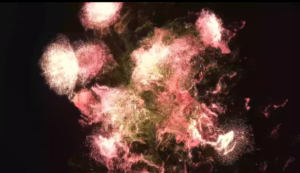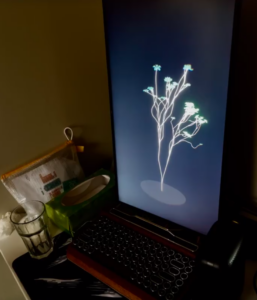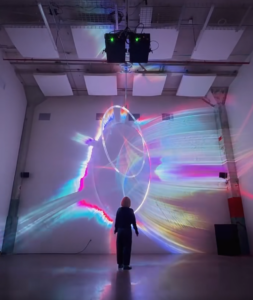On January 28, we had a discussion with Jules, who approved our concept and suggested that we explore multiple aspects of breathing and reflect them through interactive installations. Additionally, since we were uncertain about the role of AI in our project, we revisited its necessity. In our initial idea, AI seemed to be deliberately inserted rather than an organic component of the concept. Our team also felt that AI might not be highly relevant to our project. Therefore, we asked Jules whether AI integration was essential, and his response was negative. Based on this feedback, we decided to temporarily remove AI from our plan and continued refining our discussion accordingly.
Overview
The meeting focused on finalizing the exhibition theme, discussing the form of the installation, possible audiovisual effects, interaction modes, and team responsibilities.
1. Theme
The exhibition is centered around healing, guiding visitors to observe and regulate their breathing rhythm through an interactive installation to achieve balance and ultimately a healing effect.
Background:
Breathing is essential to life, yet often overlooked in daily routines. After experiencing COVID-19, we have realized that free breathing is not always a given. The process of rediscovering breath itself can be a therapeutic experience. This project aims to explore the ‘process of breathing’ and guide people to reconnect with the present moment, finding balance and stability through perception.
2. Installation Form
- Real-Time Interactive Installation: The system will collect real-time audience data via sensors, generating dynamic visual and auditory effects. Projection screens or displays, along with speakers, will create an immersive environment.
- Installation Structure: Still under design.
Data Collection
- Sound Sensors: (Certain manageable data types can be selected)
- Volume → Breath depth
- Frequency → Breathing rate
- Waveform features → Different breathing types (steady, rapid, irregular)
- Duration → Breathing rhythm
- Spectrum → Different breathing states (relaxed, tense)
- Temperature Sensors: Detecting temperature differences between inhalation (cooler) and exhalation (warmer).
- PPG Sensors (Unconfirmed):
- Heart rate → Deep, slow, and rhythmic breathing can lower heart rate, promoting relaxation.
Data Processing & Presentation
- Data transmission via Arduino to TouchDesigner/Max for generating real-time visuals and sound effects.
- Breathing data will drive changes in sound and visual parameters.
3. Audiovisual Design
- Synchronized Visuals & Music for a more therapeutic sensory experience.
- Visual Concepts: Centered around themes of healing, breathing, and life.
- Nature-Inspired Elements: Tree growth, blooming flowers, water ripples…
- Organic Forms: Artistic representations of lungs, noses, mouths, skin, and muscles.
 TD Visual Reference 1
TD Visual Reference 1
Visual Effects Example:
- Steady Breathing:
- Darker visuals with softer colors to enhance relaxation.
- Smaller, slower-moving particles creating a tranquil atmosphere.
- Water ripple diffusion slows down, giving a gentle flow effect.
- Increased transparency of elements to enhance lightness.
Sound Design Examples:
- Calm Breathing: Soft, soothing sounds complement slow visual transitions.
- Intense Breathing: Rhythmic, impactful sounds paired with dynamic visuals.
- Music & Breathing Data Integration:
- Fixed rhythm for a stable environment.
- Real-time breathing data affecting specific sound effects (e.g., low-frequency resonance, echo variations).
4. Interaction Design
- Breathing Guidance: Using voice instructions, visual cues, and sound prompts.
- Spatial Design: Layout, lighting, and projection setup.
- Group Interaction Possibilities:
- Synchronized Breathing: When multiple people breathe in sync, light pulses with the rhythm.
- Asynchronous Breathing: Different breathing rhythms trigger varying colors or motion effects.



